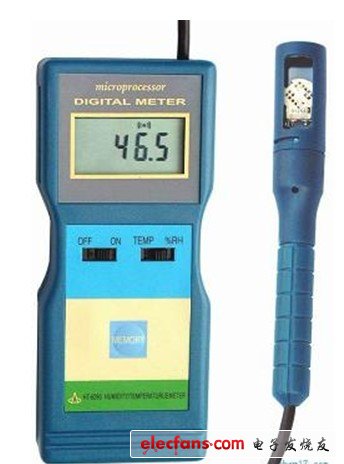I. Introduction
The air around us is a mixed gas. The air contains water vapor. The degree of dryness and humidity of the air is related to the amount of water vapor contained in the air. The degree of dryness and humidity of the air is closely related to our life and production, so we know It is necessary to have some knowledge in this area.
(1) The humidity of the air
The humidity of the air can be understood as the degree of moisture in the air. It has absolute humidity and relative humidity.
1. Absolute humidity: The pressure of water vapor in the air is called the absolute humidity of the air.
The humidity of the air can be expressed by the density of the water vapor contained in the air, that is, the mass of the water vapor contained in the air per unit volume. It is difficult to directly measure the density of water vapor in the air, and the pressure of the water vapor varies with the water vapor density. Increases and increases, so the pressure of the water vapor in the air is usually used to indicate the humidity of the air, which is the absolute humidity of the air.
2, relative humidity
(1) Introduction of concept: The concept of introducing relative humidity in order to express the distance between water vapor in the air from saturation.
(2) Relative humidity B: The absolute humidity of air at a certain temperature and the percentage of saturated vapor pressure ps of water at the same temperature are called the relative humidity of the air at this time.
1 The saturated vapor pressure of water at different temperatures can be found in the table.
2 When the absolute humidity p is constant and the temperature is lowered, the relative humidity of the air is increased due to the decrease of the saturated vapor pressure of water.
The relative humidity of the 3 bedroom is more suitable for 60% to 70%.
(2) Dew point
1. Dew point: The temperature at which the water vapor in the air just reaches saturation is called the dew point.
(1) The saturated vapor pressure of water at the dew point temperature is the absolute humidity of the air.
(2) According to the difference between the dew point and the temperature, the relative humidity can be roughly judged. The larger the difference, the smaller the relative humidity.
2, the dew point can be measured.
3. According to the measured dew point, the relative humidity of the air can be determined. From the saturated vapor pressure gauge of the water, the saturated vapor pressure at the dew point (equal to the absolute humidity of the air at the original temperature) is detected, and then the saturated vapor pressure at the original temperature is detected. It can be found.
(three) hygrometer

1. The composition of the hygrometer: The hygrometer consists of two identical thermometers. One of the thermometers is a dry bulb thermometer and the other is a wet bulb thermometer.
2. The principle of measuring the relative relative humidity of the hygrometer: Since the temperature sensitive bubble of the wet bulb thermometer wraps the cotton yarn, the lower end of the cotton yarn is immersed in water, and the evaporation of the water makes the temperature of the wet bulb thermometer always lower than that of the dry bulb thermometer. The temperature difference (temperature) is related to the speed at which the water evaporates (ie the relative humidity at that time). According to the readings of the two thermometers, the relative humidity of the air can be detected from the table or curve.
Optical fiber fusion splicer is mainly used for the construction and maintenance of optical cable in optical communication, so it is also called optical cable fusion splicer. The general working principle is to use a high-voltage arc to melt the sections of the two optical fibers while using a high-precision motion mechanism to gently advance the two optical fibers into one, so as to realize the coupling of the optical fiber mode fields.
Optical fiber fusion splicer is mainly used in:
Construction, maintenance and emergency repairs of optical cable lines of telecommunications operators, communication engineering companies, and public institutions;
Experiment, production and testing of optical devices;
research;
Teaching and research related to optical fiber communication in major colleges and universities.
Ordinary optical fiber fusion splicers generally refer to single-core optical fiber fusion splicers. In addition, there are ribbon optical fiber fusion splicers specially used to splice ribbon optical fibers, sheath fusion splicers for splicing sheathed optical cables and jumpers, and splice protection Polarization maintaining fiber fusion splicer for polarized fiber, etc.
According to different alignment methods, fiber fusion splicers can be divided into two categories: cladding-aligned and core-aligned. The cladding alignment type is mainly suitable for occasions such as low-requirement fiber to the home, so the price is relatively low; the core alignment type fiber fusion splicer is equipped with a precision six-motor core alignment mechanism, a specially designed optical lens and software algorithms, which can Accurately identify the fiber type and automatically select the matching splicing mode to ensure the splicing quality. The technical content is high, so the price will be relatively high.
Splicer Fusion,Ftth Splicing Fusion Splicer,Optic Fiber Splicing Machine,High Precision Splicer Fusion Machine
Shenzhen Scodeno Technology Co.,Ltd , https://www.scodenonet.com
